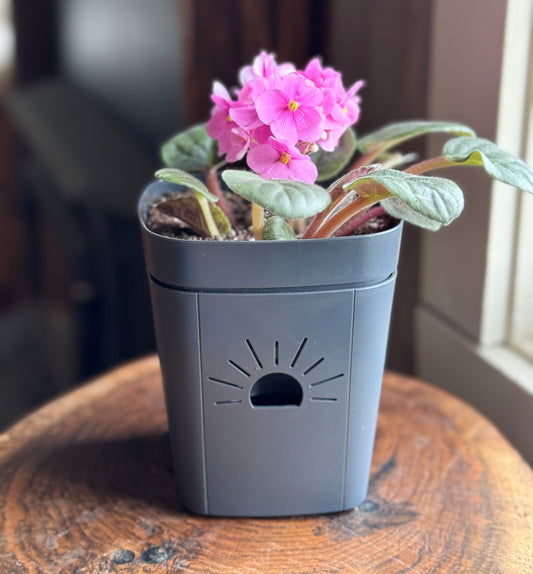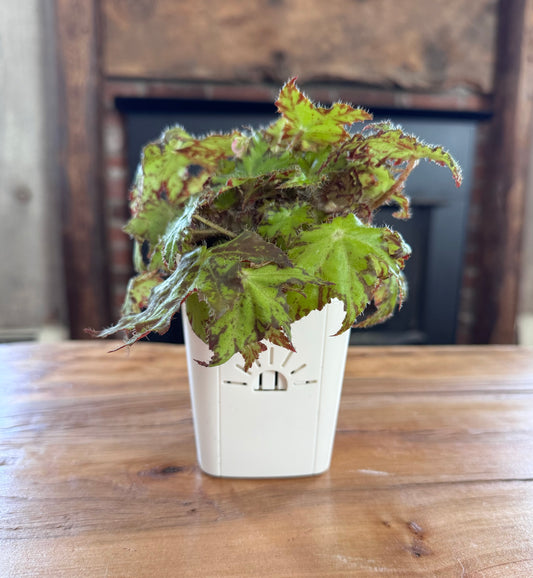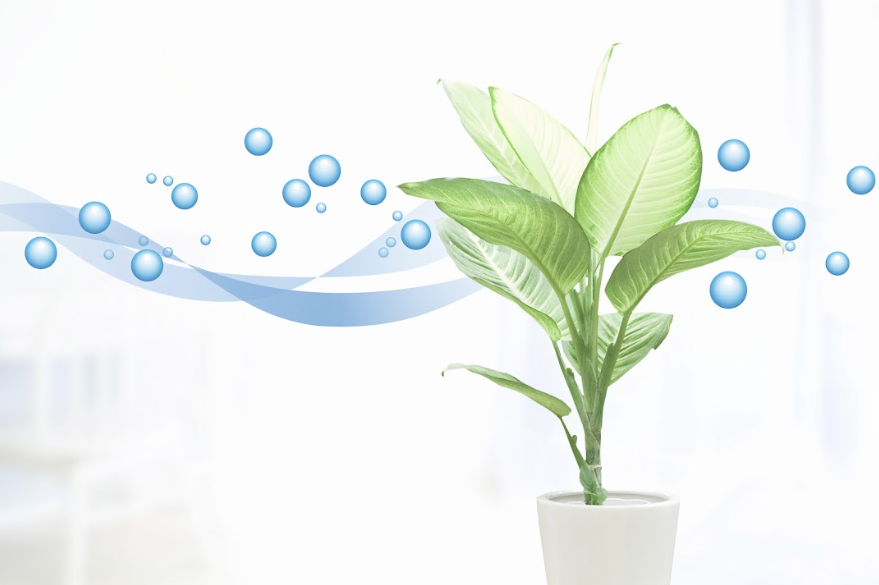Planters have been around for centuries, from ancient Egyptian civilization and the Roman Empire to modern-day gardens. Planter pots have a long and fascinating history, with their uses evolving over time as people sought more creative ways to grow plants.
From simple clay vessels used by early civilizations to decorative metal containers of the Victorian era, planter pots have seen many changes in popularity and materials. In this blog post, we will explore the origins of planter pots, how they've evolved through different eras and cultures, and how they are used today in modern gardening practices.
What is Terracotta?
To understand the history of planter pots, we must first look at the materials used to make them. You may have noticed the orange clay pots found at garden centers and not realized that they have been around for tens of thousands of years!
Clay heated to a temperature of around 1,830°F is known as terracotta. It is often used in architecture for decorative purposes and comes in both glazed and unglazed varieties. In ancient applications, the firing temperature was as low as 1,112°F.
Since prehistory, humans have been utilizing clay as a building material. To increase the longevity of the items, structures, or buildings made with clay, baked clay or terracotta was implemented. Because of its low cost, architects and builders have used terracotta for centuries.
The Italian word for 'baked' or 'cooked earth' is terracotta. It is made using a kind of porous clay that contains iron. It is an affordable, long-lasting, and adaptable material that is still widely used today.
Terracotta History
Throughout history, people have used terracotta bricks and tiles to construct homes and other public buildings. For millennia, they have been crafted by various cultures around the world, with some of the oldest examples dating back to 10,000 BCE in China and 7,000 BCE in Greece.
Additionally, people have used terracotta to create items such as Mesopotamian and Egyptian art pieces and Minoan art from Crete and Italian Etruscan art. Human beings have been using this material for a long time!
The ancient Greeks and Romans used terracotta for decorative purposes in their architecture. This tradition was revived during the Italian Renaissance and experienced a further resurgence in the 19th century.
Some historians believe that terracotta was utilized for the first time in primitive art. You can see this art by viewing the Venus of Dolby Vestonice (26,000-24,000 BCE), which archeologists found beneath a layer of ash at an ancient site in Moravia.
The Invention of the Planter Pot
The Egyptians were the earliest known people to use planters. Records show that they began using them as early as 5,000 BC, but it could have been earlier, as most clay pots were destroyed rather than preserved. Their main purpose for utilizing planters was primarily to transport plants from one location to another. They found these vessels useful in cultivating their crops and flowers effectively and efficiently.
The Egyptians utilized a wide variety of materials, such as stone, metal, and wood, to create a diverse selection of planters. Still, the overwhelming majority were made from terracotta. These vessels could range anywhere from small containers suitable for individual plants or large-scale containers designed to support trees and climbing vines.
Over time other civilizations have adopted this practice. Archeologists have found intact planter pots from ancient Greece (575-550 B.C.) that were made from terracotta and had beautiful scalloped patterns along the edges.
How Were They Used?
The first large kingdoms we know of were in the deserts of Egypt, Persia, and Babylon (called Egypt, Iran, and Iraq today). These kingdoms held humanity's first great cities, where the affluent constructed elaborate gardens. They spent their immense wealth on developing impressive structures and irrigation systems. We can confidently say their gardens were incredible and would still be impressive today, even by our high standards.
Desert tribes originally created these ancient gardens as a way to escape the harsh conditions of the desert heat. They filled them with exotic tropical plants that could thrive in dry desert conditions and carefully tended to them. People loved these lush, green spots for their contrast between the hot outdoor sand and the cool shade provided by the plants.
Eventually, these potted gardens spread throughout Europe and reached America, where they became known as planters. Today, planters are found all over the world and provide people everywhere with an opportunity for relaxation and a way to stay in touch with nature.
Evolution
The decline of the Roman Empire marked a shift in gardening styles, away from extravagant gardens and towards more utilitarian farming. The spread of Christianity during the Middle Ages furthered this trend away from potted plants. Monasteries become major centers for cultivating herbs and flowers for medicinal purposes in large outdoor gardens. These monastic gardens served as an important source of both food and medicine for local communities during this time .
Another shift occurred as people moved away from subsistence farming into more specialized agricultural practices, and planters became popular again. By the 17th century, they were widely used across Europe and had evolved into ornamental garden features in the finest aristocratic homes.
A newfound appreciation for science and culture drove the development of potted gardens during the Renaissance. As people had greater access to wealth, they began incorporating beautifully designed gardens into their homes once again. In the 17th and 18th centuries, garden design had become an art form in Europe, with many people employing professionals to design them.
The popularity of these decorative gardens led to some becoming so extravagant that it caused controversy. Many people disapproved of such displays of wealth and excessiveness. Today, we can still admire these elaborate designs in places like Versailles Palace or the Halifax Public Garden.
Types of Planters Through The Ages
Chinese flower pots from the 14th and 15th centuries were made of clay with various decorative glazes. They had modern shapes and featured detailed scrollwork, making them more ornamental than the basic terracotta planters used in ancient Greece and Egypt.
These Chinese flower pots often depicted natural scenes or animals, allowing people to bring a piece of nature into their homes. They provided an aesthetic value and served as conversation pieces for guests who admired the intricate details on each pot. The craftsmanship behind these beautiful pieces has been appreciated throughout generations, leading many of these planters to become highly sought-after collector's items at auctions today. People have passed down family heirlooms from the 16th and 17th centuries that were vase, bowl, and gourd-shaped planter pots made from thin ceramic. The primary color schemes were white and blue with floral patterns and shiny clear glazing. These were popular in North America, Europe, Africa, and the West Indies. Every museum in the world holds paintings of flowers in these types of vases, usually holding violets, geraniums, or orchids.
Victorian times saw a rise in plants being grown indoors. This practice was prevalent and provided a peaceful atmosphere in the home. During the 19th century, many people invested in planters made of brass or copper with intricate designs on them.
People decorated their homes with potted plants arranged around tables and mantles as well as window sills and shelves. There were also terrariums filled with exotic foliage for those who wanted something more unique than a standard pot or vase. In addition to providing greenery indoors, planters of various sizes could be used for growing herbs and vegetables and quickly became a normal part of everyday life.
The practice of indoor gardening grew into a large industry, with plant stands and shelving being just as fashionable as planters. Several famous artists began designing indoor planting containers, pots, and vases, including Frank Lloyd Wright and Pablo Picasso.
For centuries, clay, ceramic, and wooden containers were the only options available. However, with the onset of the 20th century, plastic materials became available, drastically changing the landscape of plant containers.
In the U.S., gardening was mainly about providing food until the mid-1900s. Following World War II and the rapid growth of suburban areas, decorative flowers became more popular. After a period with limited developments in plants or flower pot designs, companies began producing improved annuals. In the 1990s, container gardening began to take shape, with a wide range of annuals and planters becoming available. This change allowed people to become more creative and design containers that suited many different preferences.
Modern Planters vs. Ancient Planters
Surprisingly, there is little distinction between past planters and those currently on sale at your nearby garden store. In reality, terracotta pots are identical in both their design and material to the pots that the ancient Egyptians used.
Modern planters are different from their ancient counterparts in terms of material. Nowadays, lightweight plastic containers are used, which is beneficial since traditional planters made of clay or wood are pretty heavy. Additionally, the current building materials are more sturdy and resilient than the fragile ceramics that originated in ancient China, representing an improvement.
The shape of the planter has remained unchanged over the years, and the drainage holes in the bottom have also stayed the same. It appears that we have not seen an upgrade in planter design in over 5,000 years!
Conclusion
In conclusion, planter pots have been a part of human history for centuries. Initially used by ancient civilizations as storage vessels and containers for goods, they eventually evolved into objects of decorative beauty. With the rise in demand for plants and flowers to decorate both homes and gardens, planter pots soon became an essential item in many households.
There is one question that has plagued gardeners for decades. While we have made improvements in the materials used to make planter pots, the design of these containers has remained the same since the ancient Egyptians first came up with them thousands of years ago. There must be a more efficient way to grow plants and flowers than these outdated vessels. Can modern technological advances provide us with an improved method of growing plants?





 Verified Buyer
Verified Buyer









